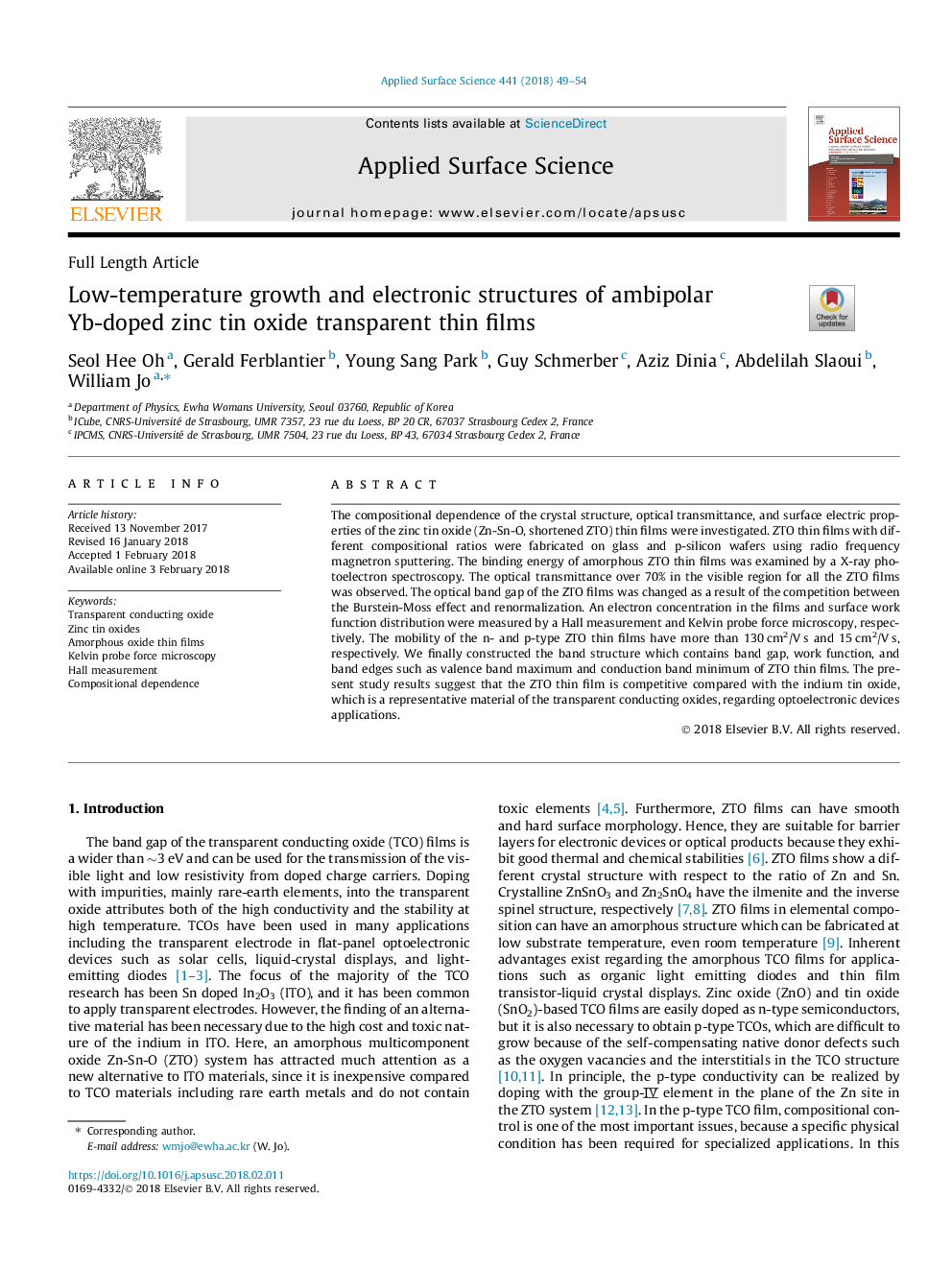| Article ID | Journal | Published Year | Pages | File Type |
|---|---|---|---|---|
| 7834794 | Applied Surface Science | 2018 | 6 Pages |
Abstract
The compositional dependence of the crystal structure, optical transmittance, and surface electric properties of the zinc tin oxide (Zn-Sn-O, shortened ZTO) thin films were investigated. ZTO thin films with different compositional ratios were fabricated on glass and p-silicon wafers using radio frequency magnetron sputtering. The binding energy of amorphous ZTO thin films was examined by a X-ray photoelectron spectroscopy. The optical transmittance over 70% in the visible region for all the ZTO films was observed. The optical band gap of the ZTO films was changed as a result of the competition between the Burstein-Moss effect and renormalization. An electron concentration in the films and surface work function distribution were measured by a Hall measurement and Kelvin probe force microscopy, respectively. The mobility of the n- and p-type ZTO thin films have more than 130â¯cm2/Vâ¯s and 15â¯cm2/Vâ¯s, respectively. We finally constructed the band structure which contains band gap, work function, and band edges such as valence band maximum and conduction band minimum of ZTO thin films. The present study results suggest that the ZTO thin film is competitive compared with the indium tin oxide, which is a representative material of the transparent conducting oxides, regarding optoelectronic devices applications.
Keywords
Related Topics
Physical Sciences and Engineering
Chemistry
Physical and Theoretical Chemistry
Authors
Seol Hee Oh, Gerald Ferblantier, Young Sang Park, Guy Schmerber, Aziz Dinia, Abdelilah Slaoui, William Jo,
